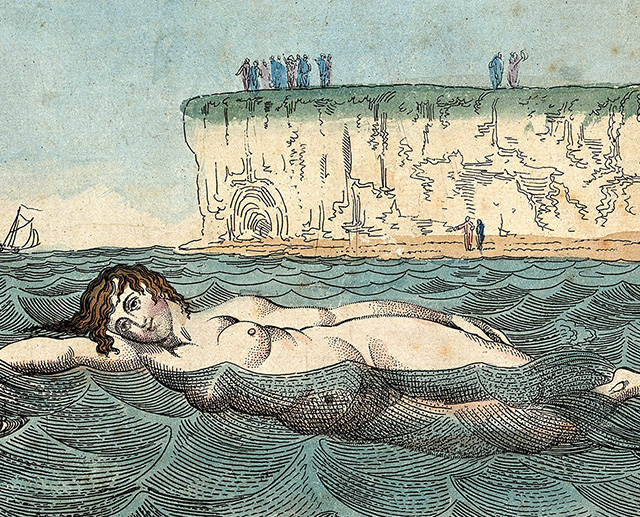The Lido
The best-known sea-bathing places of today were established by the railway companies to encourage coastal businesses. The construction of the Dublin to Kingstown (Dún Laoghaire) line saw the closure of the baths at Booterstown and Blackrock, as the bathing huts there were now cut off from the sea by the railway, which ran along an embankment across the shallow bay. While the arrival of the railway did spell the end for some bathing spots, it opened up other parts of the coast for bathing. Man-made baths became increasingly popular during the nineteenth century with the earliest sea-bath or ‘lido’ (an Italian word for beach, bespeaking elegance and cosmopolitan excitement) erected in 1833 at Lymington in Hampshire, England. The bathing pools at Clontarf, Sandymount and Dún Laoghaire all followed the style of the Lymington baths.
Excerpt from
The Ruins of Summer
by Emma Gilleece
Bathing and Swimming
Humans dipped their toes in the water during the Renaissance and relearned to swim during the Enlightenment in schools, spas and barracks, but mass-participation swimming finally took off in the 19th century when the development of the railways gave millions of city dwellers access to seaside resorts and the enactment of the Baths and Washhouses Acts of 1846 and 1878 enabled English municipalities to build in-ground, heated pools in deprived urban areas. ( This trend extended to Ireland)
Excerpt from
How Europe Learnt to Swim
by Eric Chaline
“Swimming cultivates imagination; the (wo)man with the most is (s)he who can swim in a solitary course day or night and forget a black earth full of people that push.”
A championship swimmer, cliff diver, vaudeville performer and movie star, Australian Annette Kellerman was a superwoman of the Victorian era. But perhaps her biggest legacy is something that benefited us all ~ the one-piece swim suit. It wasn’t easy to do the crawl stroke in pantaloons and a dress, so Annette designed a form-fitting alternative. Though considered risqué, it popularized the sport + lured women to the water.
Excerpt from
Quotabelle
by Pauline Weger

Nam in ullum delectus. Quo at nusquam tacimates quaerendum.

Nam in ullum delectus. Quo at nusquam tacimates quaerendum.

Nam in ullum delectus. Quo at nusquam tacimates quaerendum.